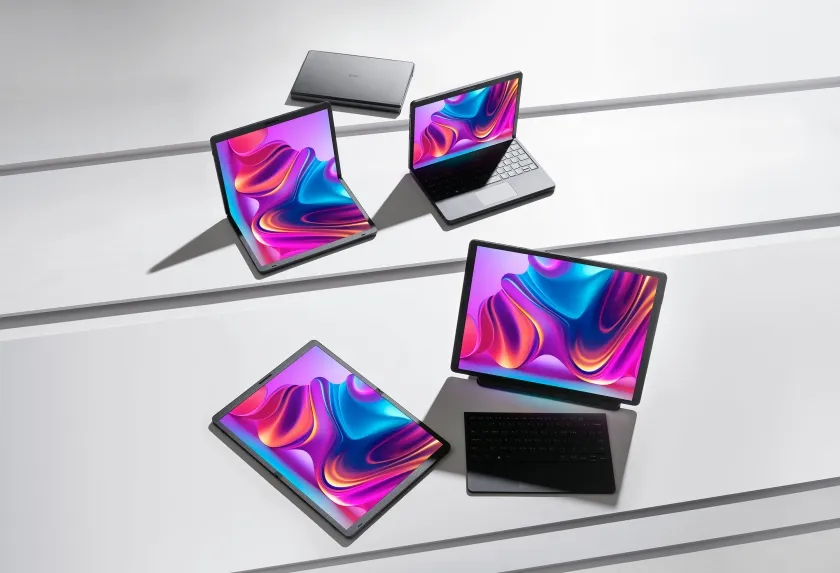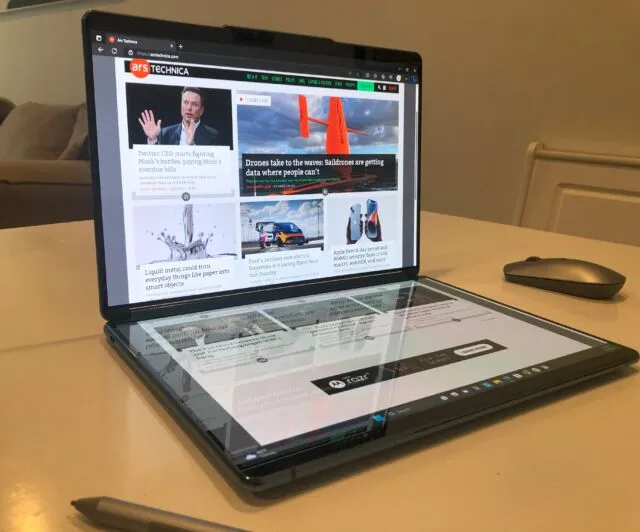


Lenovo launched the first foldable laptop in 2020, but the first real era of foldable PCs is only starting to unfold now. Today, LG became the latest OEM to announce a foldable-screen laptop, right after HP announced its first attempt, the Spectre Foldable PC, earlier this month.
LG only announced the Gram Fold in South Korea thus far. LG didn’t immediately respond when I asked if it has plans to release the machine in the US.
A Google translation of LG’s Korean announcement said the laptop is 9.4-mm (0.37-inches) thick when unfolded and used like a 17-inch tablet. Alternatively, the OLED PC can be folded in half to use like an approximately 12.2-inch laptop. In the latter form, a virtual keyboard can appear on the bottom screen, and you can dock a Bluetooth keyboard to the bottom screen or pair a keyboard with the system wirelessly. The screen has 1920×2560 pixels for a pixel density of 188.2 pixels per inch.
One draw of foldable PCs is supposed to be portability. The Gram Fold weighs 2.76 pounds (1,250g), which is even lighter than LG’s latest Gram clamshell laptop (2.9 pounds).
According to Android Authority, LG’s laptop will have an Intel Core i5-1335U, which has 8 Efficient cores (E-cores) at up to 3.4 GHz, two Performance cores (P-cores) at up to 4.6 GHz, 12 threads, and 12MB of cache. The PC is also supposed to have 16GB of RAM, a 512GB NVMe SSD, a 72 Wh battery, Wi-Fi 6E, and two USB-C ports. LG is claiming 99.5 percent DCI-P3 color coverage with the laptop.
LG said the Gram Fold will release on October 4 for 4.99 million won (about $3,726).
Mass production
Although LG hasn’t confirmed its foldable PC in the US or other countries yet, it’s highly possible it will come out in the US. LG previously released groundbreaking products in South Korea before selling them in the US and beyond.
It’s also possible we’ll see similar designs from other laptop brands, as panel supplier LG Display announced today that it will start mass production of 17-inch foldable OLED laptop panels.
The foldable OLED is made with a tandem OLED structure. It uses two-stack OLED technology, adding “an extra organic emitting layer to deliver brighter screens while effectively dispersing energy across OLED components for optimal stability and longer lifespans,”LG Display’s announcement said.
LG Display first entered mass production of foldable (13.3-inch) laptop panels in 2020. However, foldable PCs didn’t immediately take off then, despite the panel being used in Lenovo’s 2020 ThinkPad X1 Fold.
Foldable PCs lacked the software support that Windows 11 now affords with its Snap windows layouts that make organizing windows across dual or folded screens more intuitive. The operating system proved reliable for handling dual-screen window layouts when I reviewed Lenovo’s Yoga Book 9i. The 2-in-1 laptop isn’t a foldable but, rather, has a second 13.3-inch OLED screen where you would expect its physical keyboard and touchpad to be.



